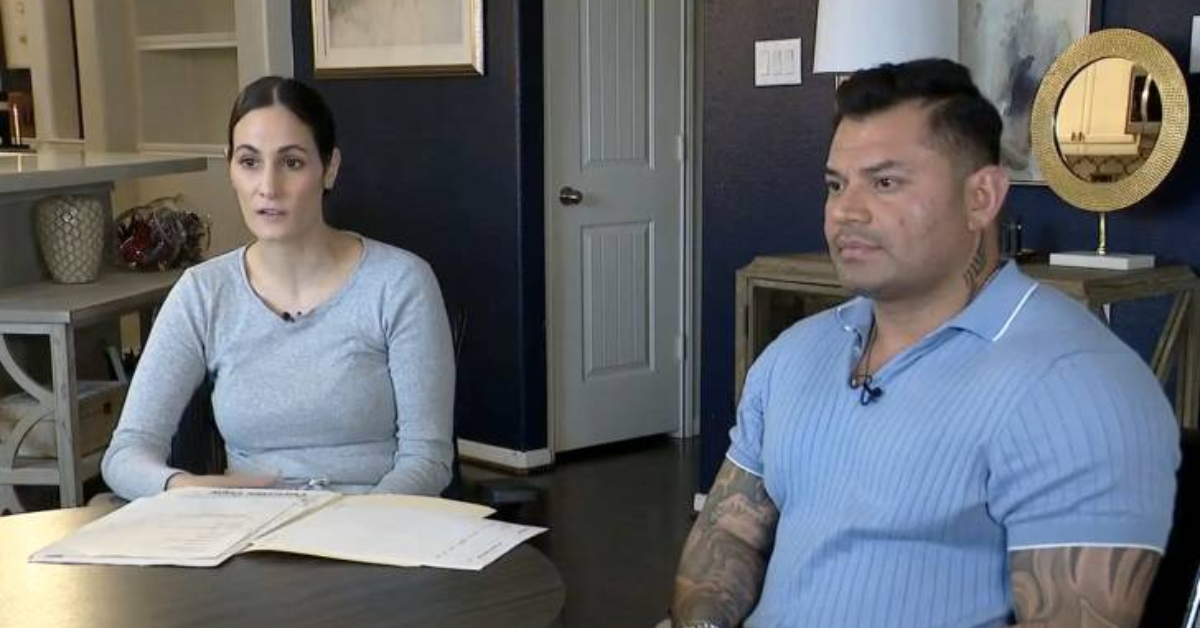A Houston couple’s determination led to victory in a battle over fraudulent transactions amounting to $40,000 with Wells Fargo. Jose and Amanda Vasquez, who run Grindstone General Contracting, discovered the fraud after checking their Wells Fargo business account on January 27. What they uncovered was shocking: two unauthorized transfers of $20,000 each.
“I noticed the first one and immediately contacted Wells Fargo,” Jose explained. He asked the bank to stop the transaction before it went through, but the bank refused. They allowed the transfer to hit the account, despite the warning. The next morning, another $20,000 was transferred—again, without the couple’s permission.
This situation left the couple frustrated and concerned. As small business owners, they relied on their accounts for important transactions and were alarmed by the fraudulent activities. Despite their swift response, Wells Fargo initially said it would not stop the transactions. Instead, they let both payments proceed before launching an investigation. The bank’s decision raised a red flag, as it seemed clear that Jose had already alerted them to the potential fraud.
Despite their immediate action, including contacting police and filing an official fraud report, the couple faced significant resistance. Wells Fargo informed them that there was no fraud, and they made it clear that their investigation had concluded. This left the couple feeling unheard and dismissed. Amanda expressed her frustration: “They’re not hearing us out, and they’re just protecting themselves.”
Realizing they had little leverage with the bank, the Vasquez family pressed forward, involving law enforcement and sending subpoenas to a bank in Alabama where the fraudulent account was based. They also took their case public, hoping that media coverage would prompt the bank to re-evaluate their position. “We felt like our only option was to get attention for our situation,” Jose said.
Their efforts paid off when Fox 26 Houston covered the story, which led to a thorough reinvestigation by Wells Fargo. Just a few weeks after their original complaint, the bank reversed its position and agreed to return the full $40,000 to the Vasquezes’ business account.
“Because of people like you, we are able to have a voice,” Jose expressed, thankful that the media had brought their case to light. In response, Wells Fargo issued an apology and explained that after completing an additional review, they had decided to “make their customer whole.” The bank also acknowledged the complexity of the fraud case and stated its commitment to serving small business owners.
While the Vasquez family’s victory is encouraging, it’s important to recognize that not everyone has access to media outlets to help them recover funds. Fraud can happen to anyone, and it’s crucial to be proactive in protecting yourself and your accounts. Here are some practical steps you can take to safeguard your online accounts:
- Use Strong Passwords:
One of the most important ways to protect your accounts is by using strong, complex passwords. Strong passwords are typically at least 16 characters long and include a combination of upper- and lower-case letters, numbers, and symbols. By using passwords that are harder to guess or crack, you make it much more difficult for criminals to access your accounts. - Enable Two-Factor Authentication (2FA):
Two-factor authentication provides an added layer of security. Once you’ve entered your username and password, you’ll be asked to verify your identity by entering a code sent to your phone or email. While this process is an extra step, it greatly increases your account’s security and reduces the likelihood of unauthorized access. - Update Device and Software Security:
Keep your security software, browser, and operating system up to date. Updates often include patches for security vulnerabilities, ensuring that your devices are protected against the latest threats. This also applies to your Wi-Fi router, so be sure to encrypt your network to prevent hackers from gaining unauthorized access. - Lock Your Devices:
When you’re not using your computer or phone, lock the screen to prevent unauthorized access. Simple but effective, this step can help protect your information in case your device is lost or stolen. - Set Up Alerts for Unusual Activity:
Many financial institutions offer alerts that notify you of unusual activity on your account, such as large transactions or login attempts. By setting up these alerts, you can quickly detect if someone is attempting to access your account without your permission.
If you notice any suspicious activity, act immediately and notify your bank or credit union as soon as possible. According to the Consumer Financial Protection Bureau (CFPB), once you report a fraudulent transaction, the bank has 10 business days to investigate and three business days to report its findings. If the bank confirms the transaction was unauthorized, it must correct the issue within one business day.
Despite all precautions, fraud can still occur, as evidenced by the Vasquez family’s case. However, the experience highlights the importance of being proactive, reporting any suspicious activity, and seeking help when necessary. The Vasquez family was fortunate to get their money back after media attention, but most people might not have that option.
While no one is immune to fraud, following these security practices can significantly reduce your chances of becoming a victim. Stay vigilant, stay informed, and take action if you suspect any suspicious activity. The more proactive you are in securing your online accounts, the safer you’ll be.
Disclaimer: This article has been meticulously fact-checked by our team to ensure accuracy and uphold transparency. We strive to deliver trustworthy and dependable content to our readers.








